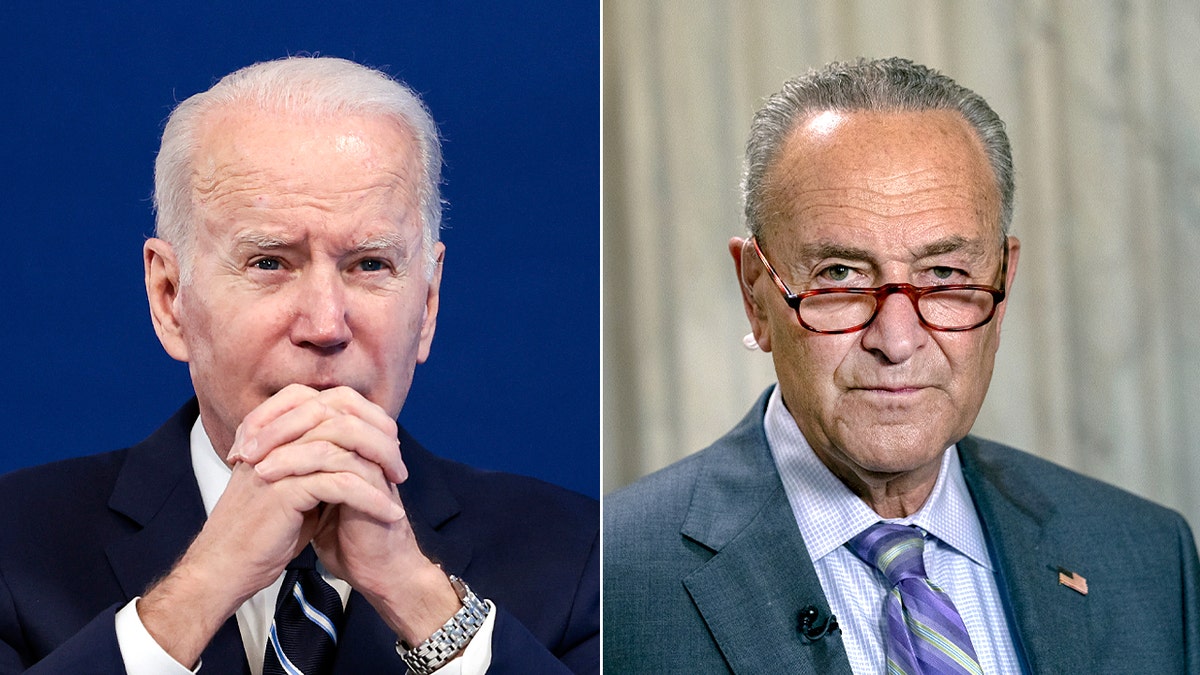Supreme Court Justice Stephen Breyer to retire, opening door for Biden appointment
Liberal justice will reportedly step down from the Supreme Court at the end of the current term, giving President Biden an opening to appoint a long-serving successor; the 'Outnumbered' panel reacts.
Supreme Court Justice Stephen Breyer announced Wednesday that he would retire, freeing up one seat on the nation's highest court for President Biden to nominate a replacement while the U.S. Senate remains in Democratic hands.
Here's the process for nominating and confirming Breyer's successor.
Nomination
In the coming weeks, President Biden will nominate a candidate to replace Breyer. He has pledged to nominate a Black female to the Court.
In the lead-up to the announcement, the White House will compile a list of candidates and Biden will likely interview them. Activist groups will lobby the White House to encourage Biden to pick a favorable candidate. Fox News and other outlets have published lists of likely nominees, but the White House will try to keep the pick secret in order to prepare a big reveal with much fanfare.
Biden will likely choose a judge, but the Constitution does not require that he do so.
SUPREME COURT JUSTICE STEPHEN BREYER TO RETIRE – PAVING WAY FOR BIDEN'S FIRST APPOINTMENT
Confirmation

President Joe Biden and Senate Majority Leader Chuck Schumer (Photo by Anna Moneymaker/Getty Images | Photographer: Stefani Reynolds/Bloomberg via Getty Images)
Once Biden names his pick, the Senate Judiciary Committee will hold hearings under Chairman Dick Durbin, D-Ill. The committee will vote to bring the nominee to the Senate floor, and the Senate will debate and vote on the nominee.
Biden's nominee will need 51 votes to secure the "advice and consent" of the Senate and become a Supreme Court justice. With the Senate split 50-50, Democrats may require Vice President Kamala Harris to cast a tie-breaking vote. While Biden may be tempted to nominate Harris herself to the Court, he may also need her vote to confirm his nominee, if Republicans band together against him.
Senate rules often require a 60-vote threshold to avoid a filibuster, but in Nov. 2013, the Democratic-majority Senate voted to change the rules to approve judges – except for Supreme Court justices – with a mere majority vote. In April 2017, the Republican-majority Senate changed the rules again, allowing the approval of Supreme Court justices by majority vote, securing the confirmation of Justice Neil Gorsuch.
McConnell's outsized role

Senate Minority Leader Mitch McConnell, a Republican from Kentucky, walks towards the Senate floor at the U.S. Capitol building in Washington, D.C., U.S., on Monday, June 7, 2021.
Democrats have raised complaints about the process, accusing then-Senate Majority Leader Mitch McConnell, R-Ky., of hypocrisy because McConnell rushed to confirm Amy Coney Barrett shortly before the 2020 election even after he had blocked the confirmation of former President Obama's 2016 pick, Merrick Garland (now U.S. attorney general).
Yet McConnell explained that he blocked Garland's confirmation because Americans elected a Republican Senate majority in 2014 as a check on Obama. "You’d have to go back to 1888 when Grover Cleveland was in the White House to find the last time a Senate of a different party from the president confirmed a nominee for the Supreme Court in an election year," he said in 2016.
Breyer likely decided to retire in part because Republicans might take the U.S. Senate in Nov. 2022.
LIVE UPDATES: BREYER RETIREMENT
How long will the process take?
The confirmation process timeline varies. According to the Congressional Research Service, the average number of days from nomination to a final Senate vote since 1975 is 67 days (2.2 months), with the median being 71 days (2.3 months).
While Amy Coney Barrett's confirmation was on the shorter side (31 days), Justice John Paul Stephens holds the record, having been confirmed just 19 days after his nomination.
Expect a partisan battle

The Supreme Court (AP Photo/J. Scott Applewhite, File)
While Supreme Court justices have insisted that they are not partisan actors, Republicans and Democrats try to pick justices whose values align with their own. Following a slew of decisions in which Republicans faulted the Court for essentially rewriting the law, Trump picked justices who pledged to follow the original meaning of the Constitution, but who also favored conservative causes like revisiting the Roe v. Wade abortion decision. Biden is likely to pick justices who will support parts of his agenda, such as upholding Roe.
CLICK HERE TO GET THE FOX NEWS APP
Democrats often focus on the outcome of Court rulings – whether a decision helped members of a historically marginalized group, for instance – and Biden may make his pick based on that criteria.
How long will Biden's nominee serve?
If the Senate confirms Biden's nominee, that person will serve on the Court until she retires or dies – the appointment is for life.






